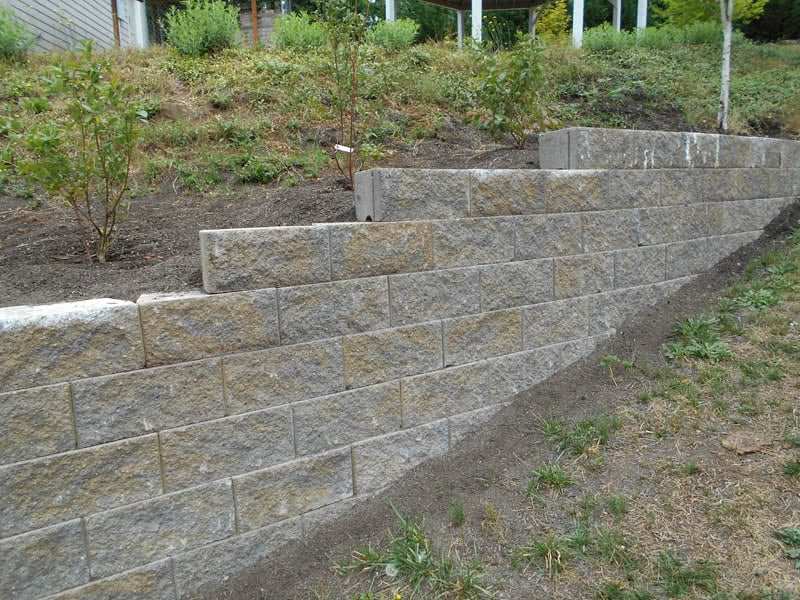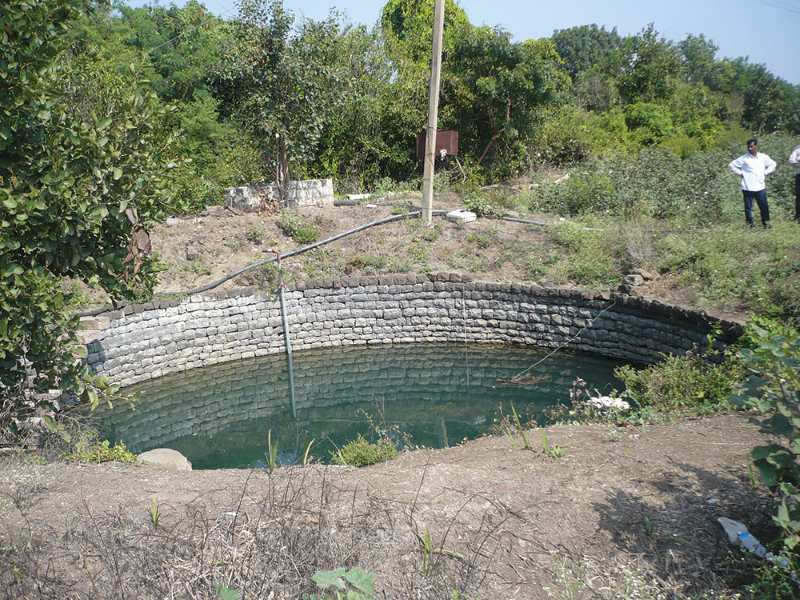Soil erosion, a process where the top layer of soil is worn away, can lead to significant environmental issues. In everyday life, there are practical ways to prevent this. These include planting vegetation, which anchors the soil with roots, using mulch in gardens to protect the soil surface, and constructing terraces on slopes to reduce runoff. Additionally, avoiding over-watering and reducing foot or vehicle traffic in vulnerable areas can make a big difference. Simple yet effective, these methods help maintain healthy soil, supporting both local ecosystems and agriculture. Here are some examples of soil erosion prevention in everyday life:
Examples
1. Planting Vegetation
Planting grass, trees, and shrubs is one of the most effective ways to prevent soil erosion. The roots of these plants hold the soil together, making it harder for wind and water to wash it away. This method is especially useful on slopes and in areas prone to wind erosion. For example, planting a grassy lawn or creating a garden with a variety of plants can significantly reduce soil loss in residential areas.
2. Using Mulch in Gardens
Mulching involves covering the soil with a layer of material like wood chips, straw, or compost. This layer protects the soil from the direct impact of raindrops, which can dislodge soil particles and lead to erosion. Mulch also helps retain moisture in the soil and can add nutrients as it decomposes. In gardens and flower beds, applying mulch is a simple yet effective way to prevent soil erosion while enhancing soil health.
3. Building Terraces on Slopes
In areas with sloped terrain, constructing terraces can be a highly effective way to prevent soil erosion. Terracing involves creating stepped levels on a slope, which reduces the velocity of water running down the slope and allows more water to soak into the soil. This method is particularly useful in agriculture on hilly terrain, but can also be applied in backyard landscaping to protect soil and create an attractive garden space.
4. Avoiding Over-Watering
Over-watering lawns and gardens can increase soil erosion by loosening soil particles and creating runoff. By watering plants only as much as they need, and using techniques like drip irrigation that apply water directly to the plant roots, you can minimize water wastage and reduce the risk of soil erosion. This practice not only conserves water but also ensures that the soil remains firm and intact.
5. Reducing Foot and Vehicle Traffic
Constant walking or driving over the same area can compact the soil and kill the grass or other vegetation, leaving the soil exposed and more prone to erosion. By minimizing the amount of traffic on vulnerable areas of soil, such as using designated paths or driveways, the soil structure can be preserved. This is particularly important in public parks and gardens, where soil compaction and erosion can be a significant problem.
6. Constructing Retaining Walls
Retaining walls are structures built to hold back soil in areas where there is a change in elevation. These walls provide support to the soil, preventing it from sliding or eroding away, especially in areas with loose or sandy soil. In residential settings, retaining walls can also enhance landscaping aesthetics while serving the practical purpose of soil conservation.
7. Installing Erosion Control Mats
Erosion control mats, often made from biodegradable materials like jute or coir, are used to protect areas of exposed soil. These mats hold the soil in place and support the growth of new vegetation. They are particularly useful in areas where vegetation has been removed for construction or landscaping and where quick soil stabilization is needed.
8. Practicing No-Till Farming
In agriculture, no-till farming involves leaving the soil undisturbed and planting crops without ploughing. This practice helps to maintain the natural structure of the soil, reduce erosion, and improve soil health over time. No-till farming can be particularly beneficial in areas prone to erosion, as it keeps the protective layer of plant residue on the soil surface, which shields it from wind and water erosion.
9. Creating Windbreaks
Windbreaks, which can be rows of trees or shrubs, are planted to reduce wind speed over the soil surface, thus minimizing wind erosion. They are particularly effective in flat, open areas where wind erosion can be a significant problem. Besides reducing soil erosion, windbreaks also provide habitat for wildlife and can improve the microclimate of the area.
10. Implementing Contour Farming
Contour farming involves ploughing and planting crops in rows that follow the natural contours of the land, rather than in straight lines up and down slopes. This method reduces water runoff by allowing more water to soak into the soil, which helps prevent soil erosion on sloped land. Contour farming is commonly used in hilly agricultural areas and can significantly reduce soil loss compared to traditional farming methods.
11. Rainwater Harvesting Systems
Installing rainwater harvesting systems, like rain barrels or cisterns, can help in soil erosion control. By capturing rainwater from roofs, these systems reduce the amount of water that directly hits the ground, thereby minimizing soil erosion around the house and garden. Additionally, the stored water can be used for irrigation, reducing the need for supplemental watering.
12. Cover Crops
Planting cover crops, such as clover or rye, during the off-season in agricultural fields helps prevent soil erosion. These crops cover the soil, protecting it from erosion by rain and wind. Besides reducing soil loss, cover crops also improve soil health by adding organic matter and nutrients when they decompose.
13. Riprap (Rock Armor)
Riprap involves placing large stones or rocks along shorelines, riverbanks, or steep slopes to protect soil from erosion, particularly from water. The rocks absorb and deflect the energy of flowing water or waves, which helps to stabilize the soil in these areas. This method is commonly used in coastal areas and along riverbanks to prevent erosion from currents and tides.
14. Grassed Waterways
In agricultural fields, grassed waterways are used to channel and convey runoff water without causing soil erosion. These waterways are natural or constructed channels that are planted with grass to prevent the soil from washing away. They are particularly effective in areas with heavy runoff, ensuring that water flows gently and does not erode the soil.
15. Buffer Strips
Buffer strips are areas of land maintained in permanent vegetation, located between farmland and vulnerable areas like rivers or streams. These strips of grass, trees, or shrubs help to trap pollutants, sediments, and prevent soil erosion by stabilizing the soil and slowing down water flow. They are especially beneficial in agricultural landscapes to protect waterways from contamination and erosion.
16. Gabion Baskets
Gabion baskets are wire cages filled with large rocks, commonly used to stabilize slopes and shorelines. They act as barriers that prevent soil from being washed away by water. These structures are particularly useful in controlling erosion along riverbanks, lakeshores, and areas susceptible to flooding, providing a durable and environmentally friendly solution.
17. Permeable Paving
Permeable paving, such as gravel, porous concrete, or permeable pavers, allows water to percolate through the surface and into the ground. This reduces the amount of runoff that can cause soil erosion around paved areas. It’s an effective method in urban settings, particularly in driveways and parking areas, to manage stormwater and reduce erosion.
18. Silt Fencing
Silt fencing is a temporary barrier made of synthetic fabric which is used on construction sites to prevent sediment and soil from washing into waterways. These fences trap sediment while allowing water to flow through, significantly reducing soil erosion at sites where the landscape is disturbed and vulnerable to erosion.
19. Live Staking
Live staking involves planting cuttings of certain fast-growing, soil-binding plants directly into the ground. These stakes take root and grow into plants, stabilizing the soil and reducing erosion. It’s particularly effective along stream banks and in wetlands where soil erosion can be a problem due to fluctuating water levels.
20. Contour Buffer Strips
Similar to contour farming, contour buffer strips involve planting strips of grass or other permanent vegetation between rows of crops. These strips follow the natural contour of the land, intercepting runoff and trapping soil particles. This technique is particularly effective in rolling terrain, reducing soil erosion and runoff while also providing habitat for wildlife.
- 20 Examples of Soil Erosion Prevention in Everyday Life - October 13, 2025
- 20 Examples of Urban Wildlife Interactions in Everyday Life - October 13, 2025
- 17 Examples of Natural Pest Control Methods in Everyday Life - October 13, 2025























